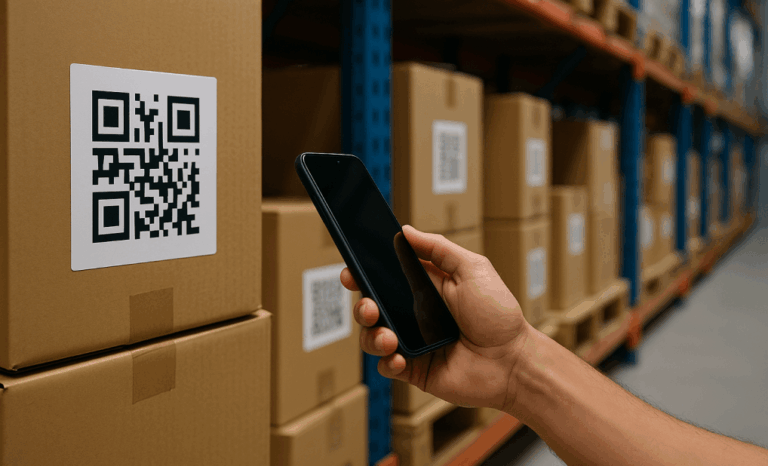QR codes are already a smart way to connect with people — but track QR codes, and they become a goldmine of insights. With every scan, you can uncover when, where, and how users engage. Use a dynamic QR code generator with tracking features, and you’ll turn simple codes into data-driven tools that sharpen your marketing campaigns.
What are QR codes?
QR codes — short for ‘Quick Response codes’ — are square-shaped barcodes that pack a digital punch. You’ve likely seen them on posters, product packaging, or even your restaurant menu. With a quick scan using a QR code reader or a smartphone camera, users can jump straight into a digital experience.
At their core, QR codes act as portals — instantly connecting the physical world with the digital one.
A single scan can open a specific URL, whether it’s a limited-time promo, a mobile-friendly landing page, or detailed info printed right on your product packaging.
What makes a dynamic QR code especially powerful is its flexibility. Marketers can update the link behind the code without reprinting anything, which is why dynamic QR codes have become a key ingredient in modern marketing campaigns.
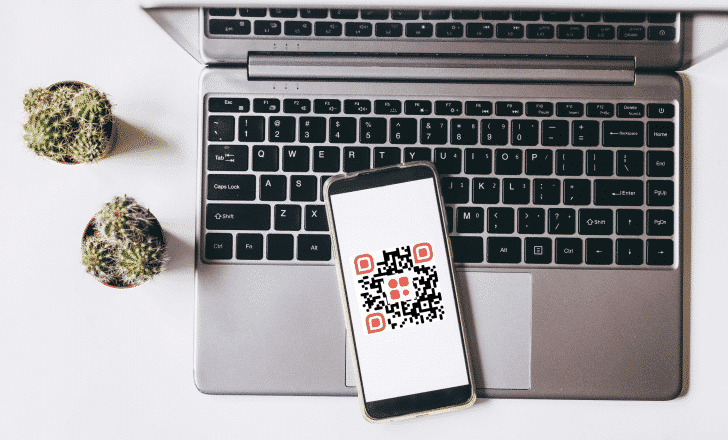
Dynamic vs. static QR codes
Not all QR codes are created equal — and understanding the difference between dynamic QR codes and static QR codes can make or break your marketing strategy.
A static QR code is exactly what it sounds like: fixed and unchangeable. Once you create it, it’s locked in. It’ll always send users to the same destination — whether that’s a website, video, or digital file. If you need to update the link? You’ll have to make and distribute a whole new code.
Dynamic QR codes, on the other hand, give you flexibility. You can change the destination URL at any time — even after the code has been printed, posted, or shared.
That means no reprints, no redesigns — just a quick update on the backend. This not only saves time and money, it also lets you adjust campaigns in real time.
From tailoring content based on user behavior to swapping links for seasonal offers or social media promotions, dynamic QR codes help businesses stay sharp, responsive, and in control of their marketing efforts.
QR Code KIT: our legacy as the first dynamic QR code innovators
At QR Code KIT, we don’t just create QR codes — we helped invent what they could become. As the first dynamic QR code generator, we’ve led the way in transforming QR codes from static tools into powerful engines of insight and action.
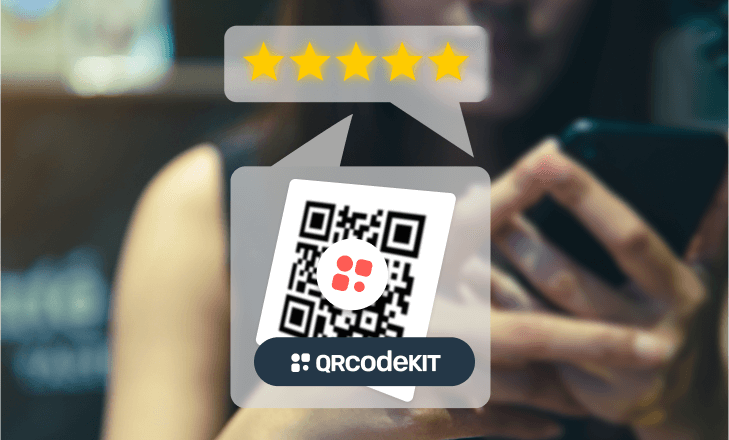
Our mission has never been about generating codes for the sake of it. We’ve built a robust tracking system designed to extract real value from every scan — showing not just where users land, but how they interact along the way.
Every code you create with QR Code KIT comes embedded with advanced QR code tracking features — so you’re not guessing what’s working, you’re seeing it in real time.
For our clients, that means every QR code does more than just connect — it delivers insight. It captures behavior, reveals preferences, and helps optimize marketing efforts on the fly.
In a world where data drives decisions, we stand out by delivering both the tools and the intelligence that modern QR code campaigns need to thrive.
The need to track QR codes
As QR code campaigns become essential in both digital and print marketing, knowing how they perform is no longer optional — it’s critical. Just like you wouldn’t launch a website without checking your traffic, you shouldn’t deploy QR codes without understanding how people use them.
That’s where QR code tracking comes in. When you track QR codes, you gain real-time insights into how often they’re scanned (number of scans), when users engage (scan time), and even where the interaction happens — all thanks to GPS location data.
But it’s not just about counting scans. These tracking metrics give you a clearer view of user behavior — showing whether your campaign is actually reaching and resonating with your target audience.
You can even dig deeper into the devices and platforms behind each scan. Are people using iPhones or Androids? What QR code readers are they relying on? What’s the most common operating system?
All of this tracking data helps you fine-tune your approach. You could decide to lean more into social media advertising, or optimize your landing page to increase conversions.
In short, when you track your QR code, you’re not just launching a campaign — you’re learning from it. And those insights are what make your future campaigns stronger and more strategic.
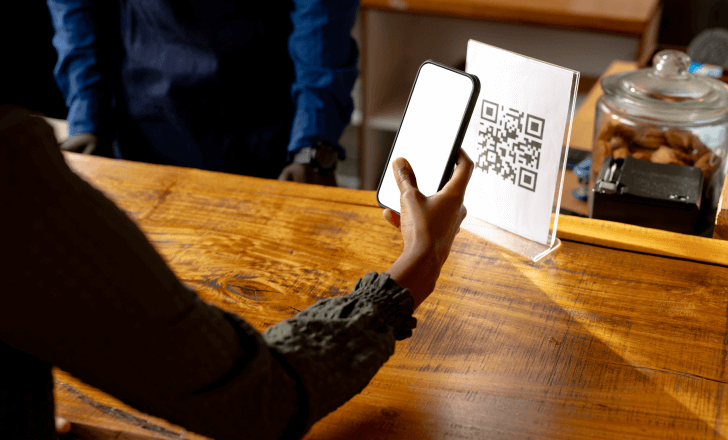
How does QR code tracking work?
QR code tracking may look simple from the outside — scan a code, open a link — but behind the scenes, there’s a smart system at work, especially with dynamic QR codes.
Unlike a static QR code, which sends users straight to a destination with no way to gather data, a dynamic QR code takes a short but important detour. That detour is what makes tracking possible.
Here’s how it works: when someone scans a dynamic QR, the request is first routed through a special server — the engine of the tracking system. This server doesn’t just forward users to the destination URL; it logs valuable details in the blink of an eye.
Each scan captures key info: the device type, operating system, GPS location, and even the exact scan time. It’s all recorded in real time — and the user still lands on your content almost instantly, with no delay they’ll ever notice.
For businesses, this brief pause is packed with potential. Each QR code scan becomes a mini data set that reveals how, when, and where people engage. That’s how you go from just launching QR code campaigns to optimizing them with purpose.
And when you connect your trackable QR codes to a Google Analytics account, you can take that insight further — tying scans to website traffic, measuring the performance of print ads, or tracking the real-world impact of social media campaigns.
Every scan adds a new layer to your understanding — building a sharper, more complete picture of your QR code campaign’s performance.
What can be tracked?
The real power of trackable QR codes is in the rich, detailed data they deliver. With every scan, you get a snapshot of how users are interacting — and that insight goes far beyond just a simple click.
Here’s what you can track:
- QR code scans – See how many times your code has been scanned and measure engagement over time.
- Time of scan (scan time) – Learn when users are most likely to interact with your code — mornings, evenings, weekdays, or weekends.
- Operating system and device type – Know whether your audience is scanning on iPhones, Androids, tablets, or desktops.
- GPS location of the user – Discover where your scans are coming from, down to the city or region.
- Referring channels – Find out what’s driving those scans — from print ads to social media campaigns, and everything in between.
Advantages of QR code analytics
QR code analytics aren’t just about tallying scans — they’re about turning each scan into a smart, strategic insight. In today’s data-driven marketing world, knowing how people interact with your QR code campaigns can give you a serious competitive edge.
One major benefit? Understanding scan frequency. You can see not just the total number of scans, but also how many of them came from unique users versus repeat ones.
A high number of unique scans means your campaign is reaching lots of people. But if you’re seeing repeat scans, that’s a strong signal that your content is resonating — users are coming back for more.
The value doesn’t stop there. With QR code monitoring, you can track what happens after the scan. How long do users stay on the landing page? Do they click through to other parts of your site or app? Which sections get the most interest?
These insights into user behavior help you optimize your content — making sure the experience is smooth, relevant, and engaging from the very first tap.
When you pair QR code tracking with a Google Analytics integration, things get even more powerful. You can compare QR-driven traffic to other sources, measure how well print ads or social media campaigns perform, and fine-tune your marketing strategies with confidence.
You’ll also uncover technical details — like which operating systems your audience uses. Whether they’re scanning with iOS, Android, or another platform, you can make sure your content looks great and works smoothly.
And by analyzing scan time trends, you can pinpoint when your audience is most active — making it easier to time your campaigns for maximum impact.
In short, QR code analytics turn basic scans into actionable insights — helping you build smarter, sharper, and more effective marketing campaigns.
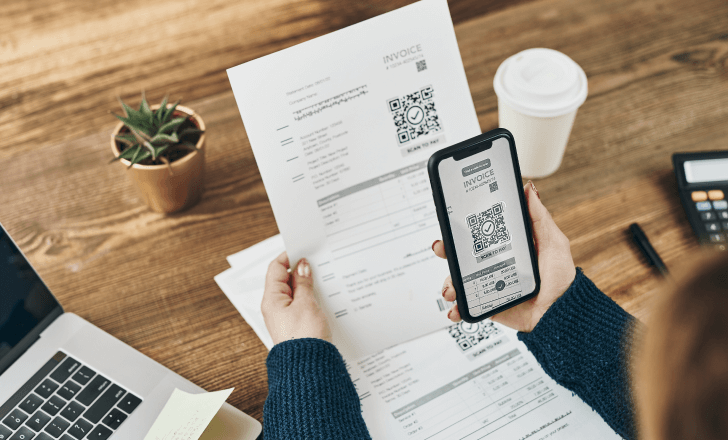
Enhancing marketing efforts
In a world where every marketing move counts, the ability to track QR codes is a game changer. It gives you a front-row seat to what’s working — and what’s not.
Take this example: is the QR code on your print ads driving more scans than the one in your social media campaigns? With tracking, you’ll know exactly which channel performs better.
These insights go beyond surface-level numbers. You can see how long users stay on your landing page after scanning, what they click on, and whether they take the next step — like making a purchase or downloading your app.
When paired with tools like Google Analytics, QR code tracking helps you measure how QR-driven traffic contributes to your overall website traffic or app downloads.
It’s about using data you collect. With actionable insights in hand, you can adjust your marketing efforts and use more of the tactics that truly connect with your audience.
Google Analytics integration
Connecting trackable QR codes with Google Analytics brings your online and offline marketing into one clear picture.
With the UTM URL method, every scan feeds directly into your Google Analytics account — whether it came from a print ad, a flyer, or a social media campaign. That means no manual guesswork, just automatic, accurate tracking.
But it’s not just about the number of scans. This integration lets you see what happens after the scan — do users explore your site, boost your website traffic, or hit that app download button?
By layering QR code tracking on top of your existing analytics setup, you get richer, smarter data — the kind that helps you make more confident, informed marketing decisions.
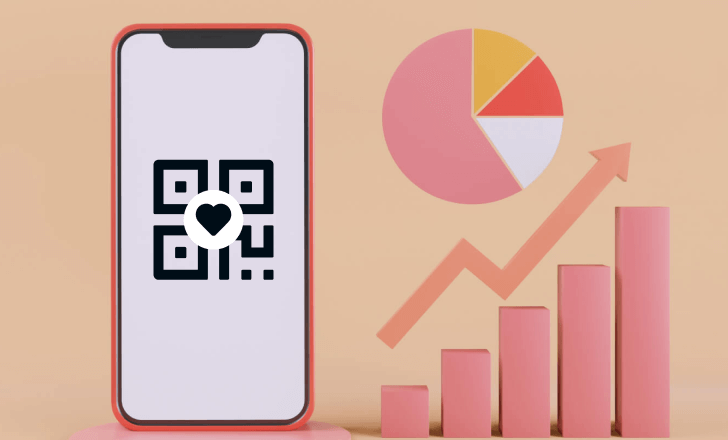
The power of actionable insights
QR code analytics offer more than just data — they shape the way businesses connect with their audience in meaningful ways.
By tracking how users scan QR codes, companies can identify what’s working, what’s not, and where to focus next.
Let’s say a QR code on your product packaging outperforms one in a social media campaign. That’s not just a fun fact — it’s a roadmap for smarter marketing.
Or imagine a QR code campaign that generates a lot of app downloads. That’s a strategy worth repeating, expanding, and building on.
The flexibility of dynamic QR codes makes these adjustments easy. If a destination URL isn’t landing with users, you can swap it out in seconds — no reprints, no wasted materials. And by looking at the device type, you can make sure your content is always optimized for the right screen.
Bottom line: QR code tracking isn’t about collecting numbers for the sake of it. It’s about turning those numbers into actionable insights that improve user engagement and push your marketing efforts further.
QR code campaigns and monitoring
QR code campaigns are the perfect link between your offline and online marketing worlds. And with trackable QR codes, you’re not just connecting — you’re learning.
You’ll see details like scan time and device type, which help you understand how users engage across different channels — whether it’s from a poster, packaging, or a social media campaign.
When you add Google Analytics integration to the mix, the insights go even deeper. You can track what happens after the scan — from page visits to conversions.
And thanks to dynamic QR codes, you don’t have to wait to make improvements. You can update the destination URL instantly, tweaking your campaign based on real-time feedback and performance.
QR code generators with tracking features
Not all QR code generators are built the same. A powerful platform — like QR Code KIT — gives you more than just a way to create dynamic QR codes. It builds in tracking features that turn every scan into valuable data.
With the right tool, all your QR codes do more than just connect users — they deliver insights that help you measure impact, tweak campaigns, and grow smarter with every scan.Beyond tracking: enhancing user experience
While tracking is vital, ensuring that the QR code leads to a valuable landing page or provides necessary contact details enhances user experience.
Why only dynamic QR codes can be tracked
Here’s the key detail: only dynamic QR codes can be tracked.
That’s because they don’t point directly to the final link. Instead, they route the scan through a redirect — a step that makes QR code tracking possible. It’s this quick detour that allows you to gather data like scan time, location, device type, and more.
Static QR codes, on the other hand, skip that redirect — which means no tracking, no insights, and no way to adjust.
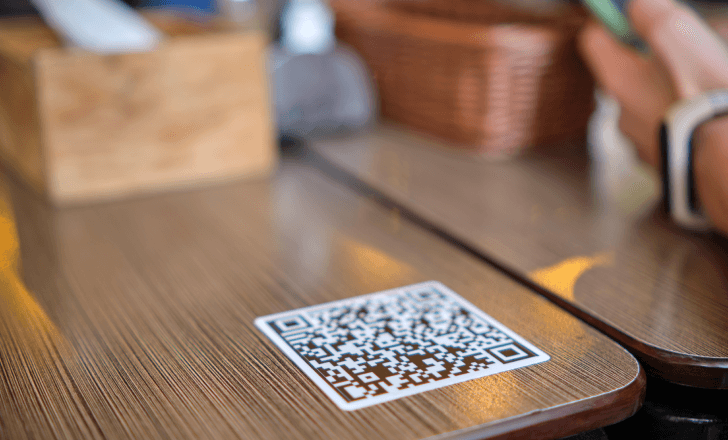
Capturing the target audience
When you dive into QR code metrics, you’re learning about your audience by tracking performance.
These insights allow you to restructure your messaging, improve your timing, and choose the right channels to better connect with your target audience.
The outcome is smarter campaigns that really speak to the people you’re trying to reach.
Conclusion
Tracking QR codes it’s a way to truly understand your audience and design campaigns that actually connect.
In the dynamic QR code world, insight is everything. The more you know about how people interact with your codes, the more you can fine-tune your message, timing, and reach.
This guide to QR code tracking gives you the tools to turn every scan into an opportunity — helping you sharpen your strategy, boost engagement, and get the most out of every campaign.



